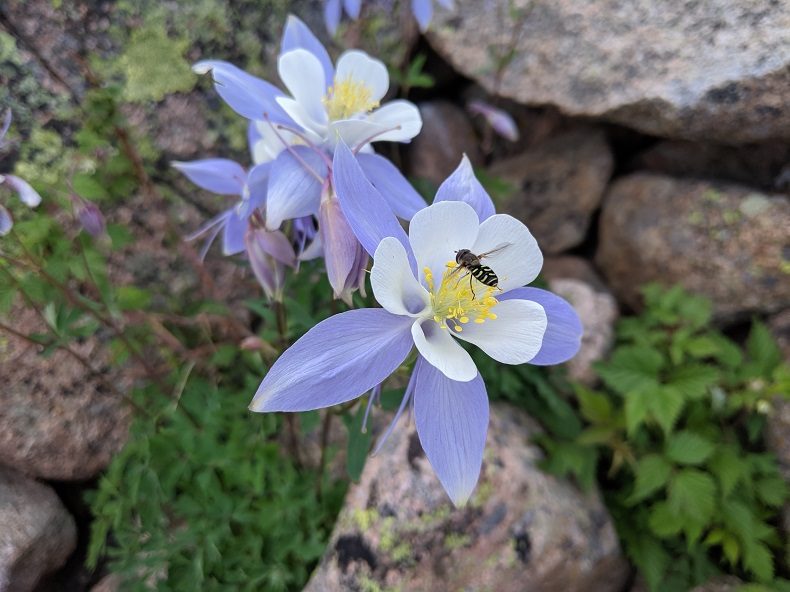
Six years ago in July I was in London for a week, and one day a bee was banging itself against the skylight at my friend’s house, over the desk where I was working. After being annoyed by it for a while—c’mon, bug, the skylight is open—it occurred to me that this wasn’t a very bee-like thing to do. Bees don’t get stuck inside, then bang themselves against windows. Bees bumble. Even the ones that aren’t bumblebees bumble.
This animal was definitely banging, and from somewhere in the depths of my mind I pulled the fact that there are flies that look like bees. If I set aside its stripes, I could tell that it was acting like a fly, it sounded like a fly and, if you could get past the coloration, it looked like a fly—huge eyes, fly-shaped wings.
Here are some facts about hoverflies that I had to check on the internet:
- A hoverfly really is a fly, not some other kind of thing masquerading as a fly. Like the other flies, it only has two wings. (Bees, like most flying bugs, have four.)
- You can call them hover flies if you prefer. In fact, neither of the paper dictionaries I checked at home even list “hoverfly” as one word. “Flower flies” is also good. Or “syrphids,” which seems like it ought to be poetic but actually comes from the Greek for “gnat.”
- Like bees, many of them are pollinators.
- Unlike bees, many of them eat aphids. (That’s when they’re maggots; when they grow up, they feed on nectar or pollen.)
- Looking like bees probably helps protect them from predators.
This summer I was hiking in Rocky Mountain National Park. At some point in the last six years I became used to the existence of these hoverflies, and now, when I see something buzzing around a flower, I don’t immediately think “bee.”
This time the hoverflies particularly stuck out. As I approached the treeline, the altitude where trees give up and the landscape turns to stubby little plants that can make it through the harsh winter, it seemed like I saw hoverflies everywhere. They were buzzing and darting around the flowers, moving just like flies.
Like so many things we ignore, hoverflies are incredibly diverse; there are thousands of species, going about their business without the average person paying much attention. (Or am I wrong about the average person? Probably. When I think of my reader, I think of a middle-class, college-educated city dweller; probably the true, global average person instantly catches on when something is behaving unlike a bee.)
It comes to me again and again how important classification is for seeing. I knew what lichens were, but it wasn’t until I realized how to look for them that I saw them everywhere. Same with the hoverfly. Out there, hatching, eating aphids, then growing up and pollinating flowers, just one of many neighbors doing its job while I do mine.
Photo: Helen Fields (that’s me)
For what it’s worth: https://www.un.org/en/development/desa/news/population/world-urbanization-prospects-2014.html
Most people live in cities.
You’ve just answered a question I’ve long had about those flying insects at RMNP. I knew they weren’t bees but the standard flies I know have no interest in nectar. Hover flies! Now I know and that’s cool.